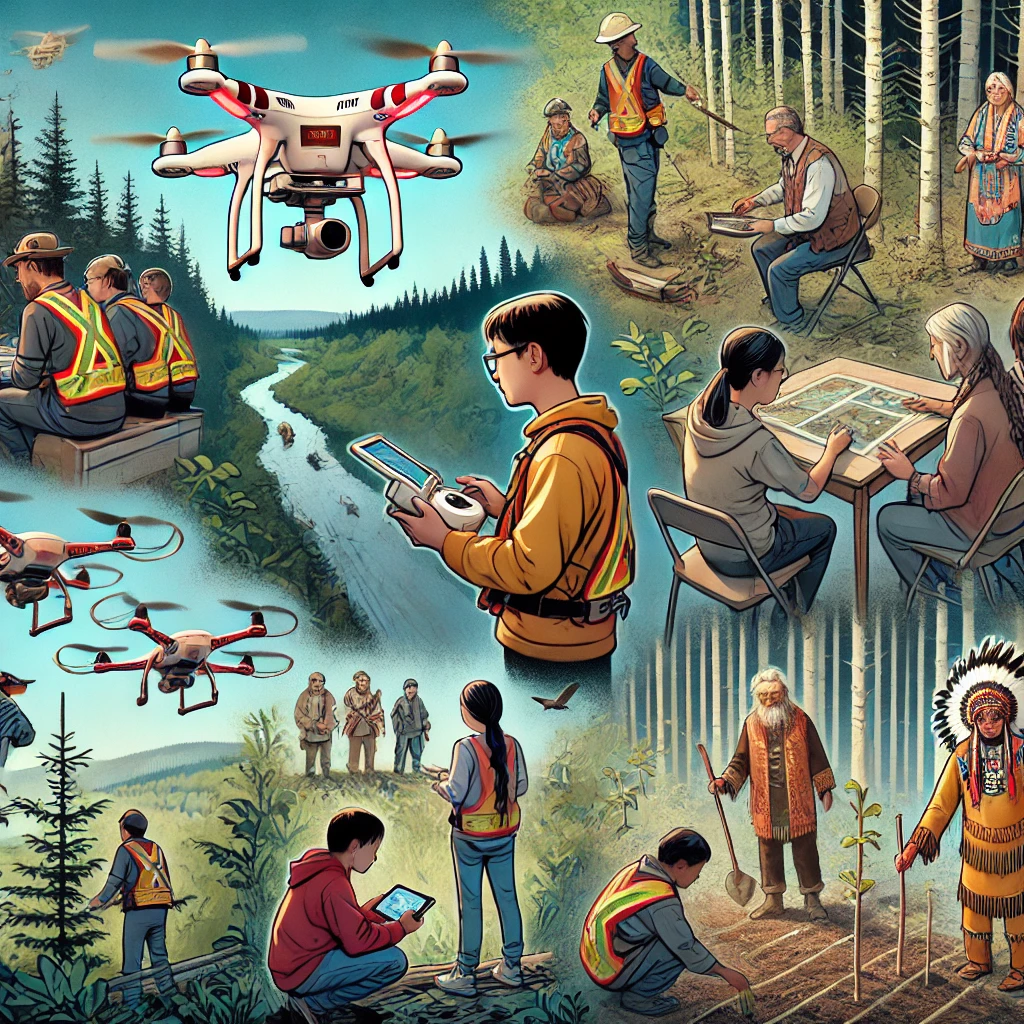Unceded Air

Like some land or most water, the sky in North America is viewed as unceded territory belonging to Indigenous Peoples because no treaties or agreements explicitly transfer the rights to the airspace. Indigenous Nations have traditionally viewed the land, water, and sky as interconnected, integral parts of their territories. Further the well-being of their communities is tied to their stewardship of the territorial environment. While many treaties contained land agreements that were forced or negotiated regarding land use, they did not explicitly cover air rights or the skies above.
From this perspective, the sky remains unceded, as Indigenous Nations never surrendered their sovereignty over it. In traditional Indigenous legal frameworks, the land, air, and water are not owned but rather cared for as a shared resource among people and all living beings. With the rise of modern technologies like drones, aerospace innovations, and other aerial activities, there is a growing recognition that Indigenous Peoples should be consulted and included in discussions surrounding airspace use, given the ongoing historical context of colonization and the fact that the sky was never part of treaty negotiations.
This view reinforces the idea that Indigenous sovereignty and rights extend beyond just the physical land but also to the airspace above, which remains a part of their territories and cultural heritage. The argument that the sky is unceded further underscores the need for the continued recognition and respect of Indigenous rights to govern and care for all aspects of their traditional territories, including the skies.
